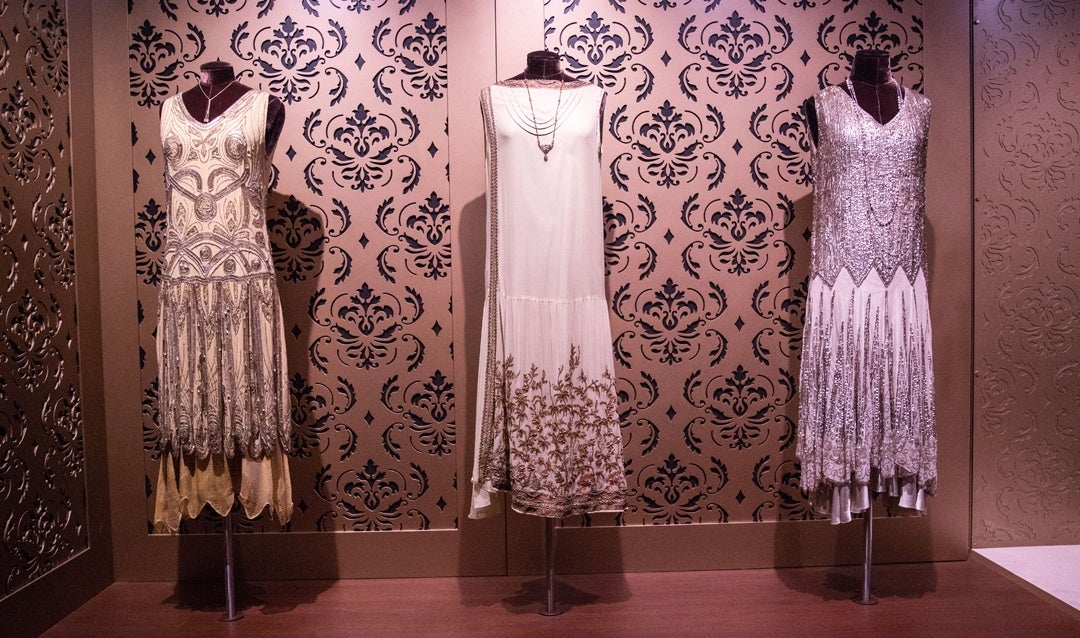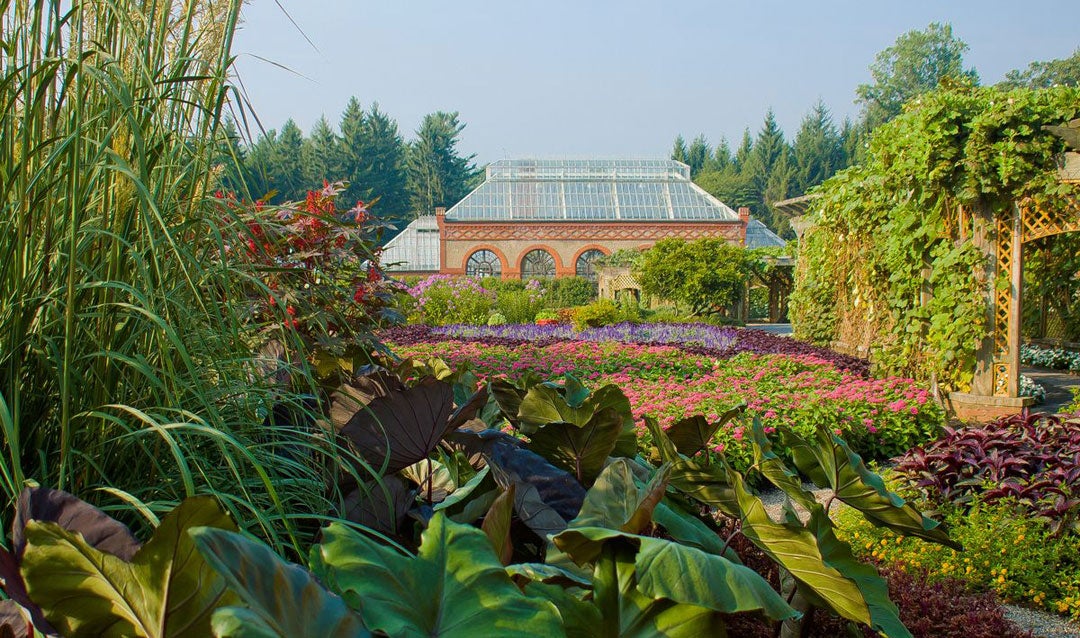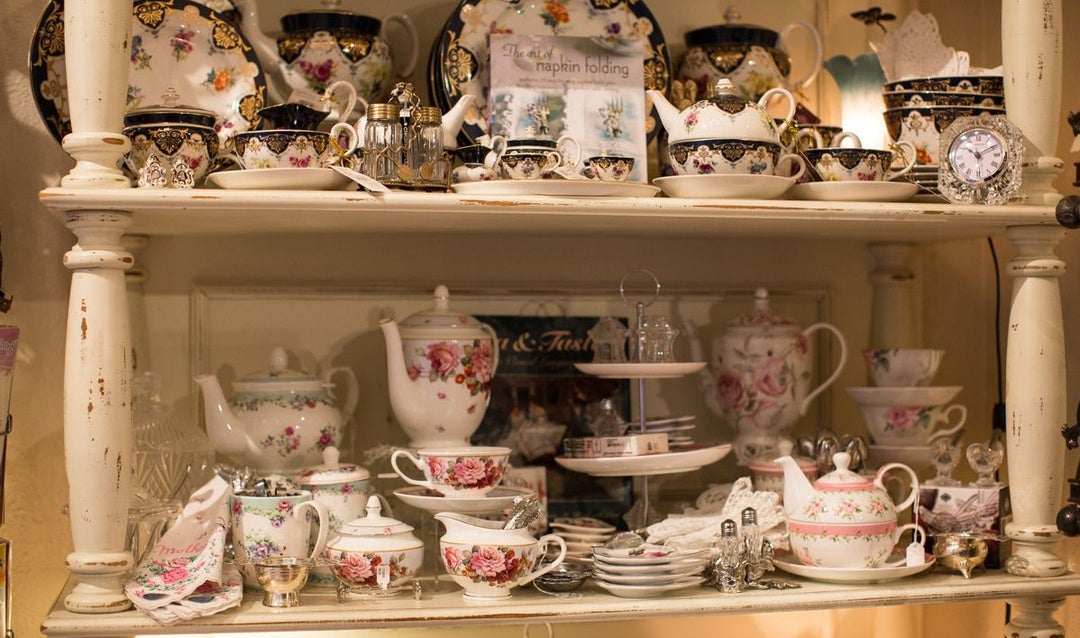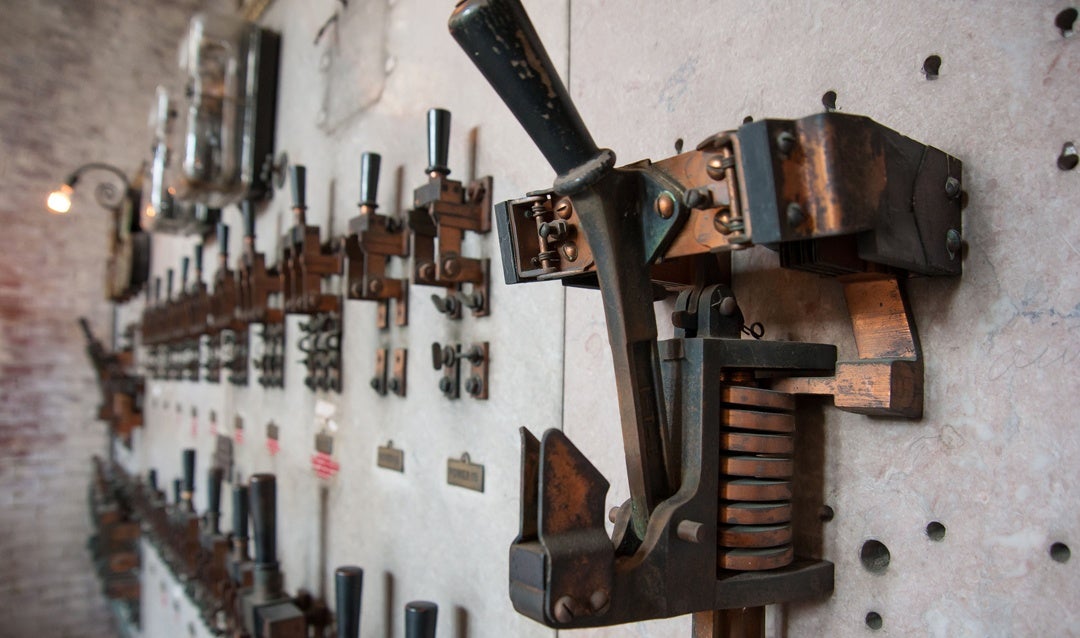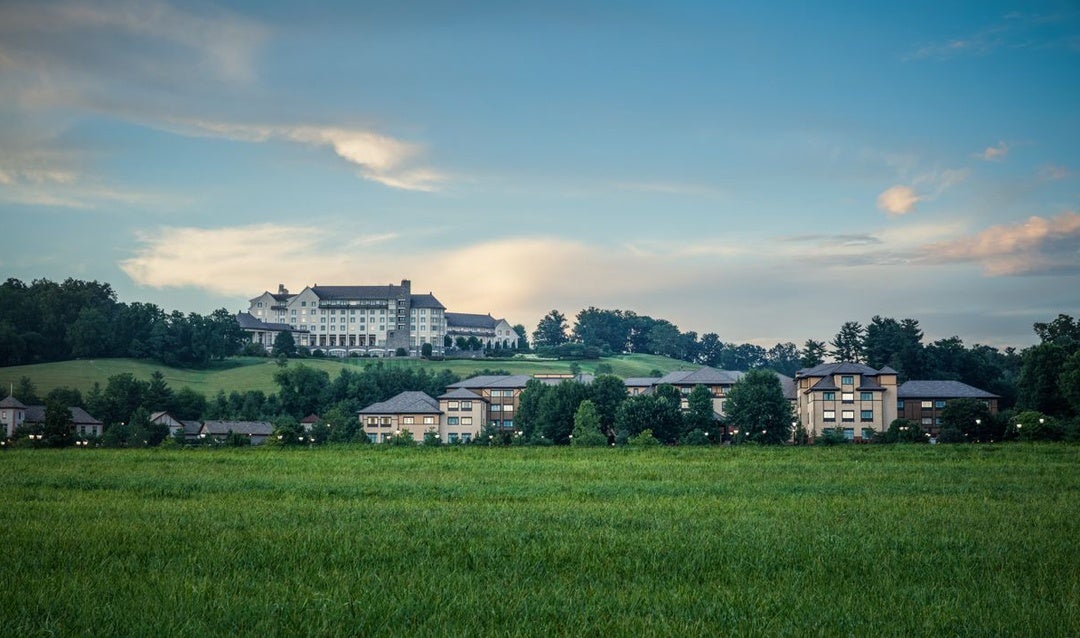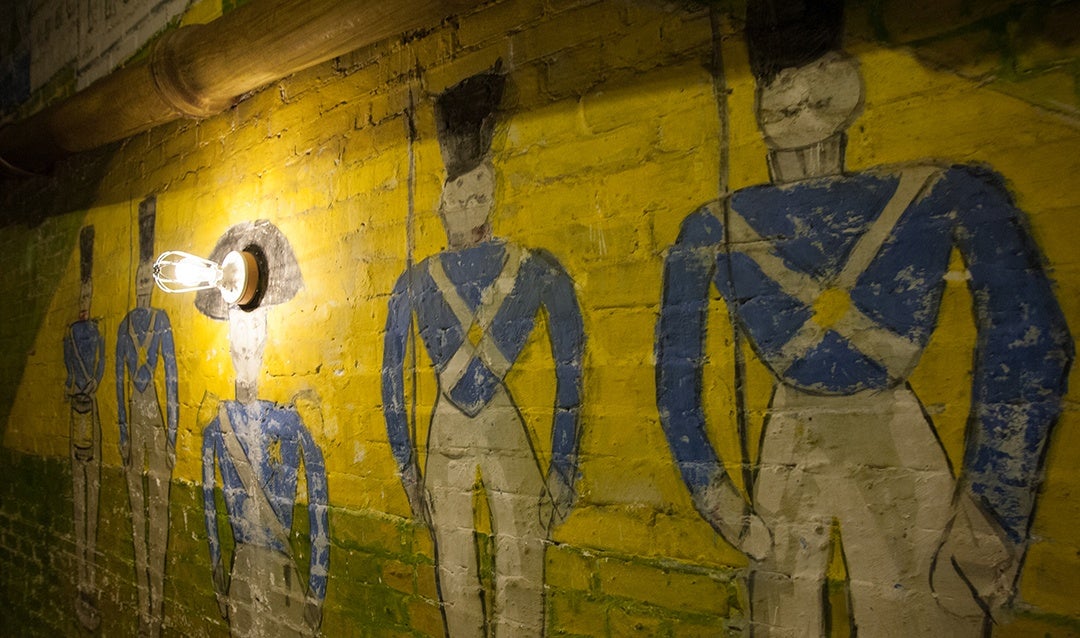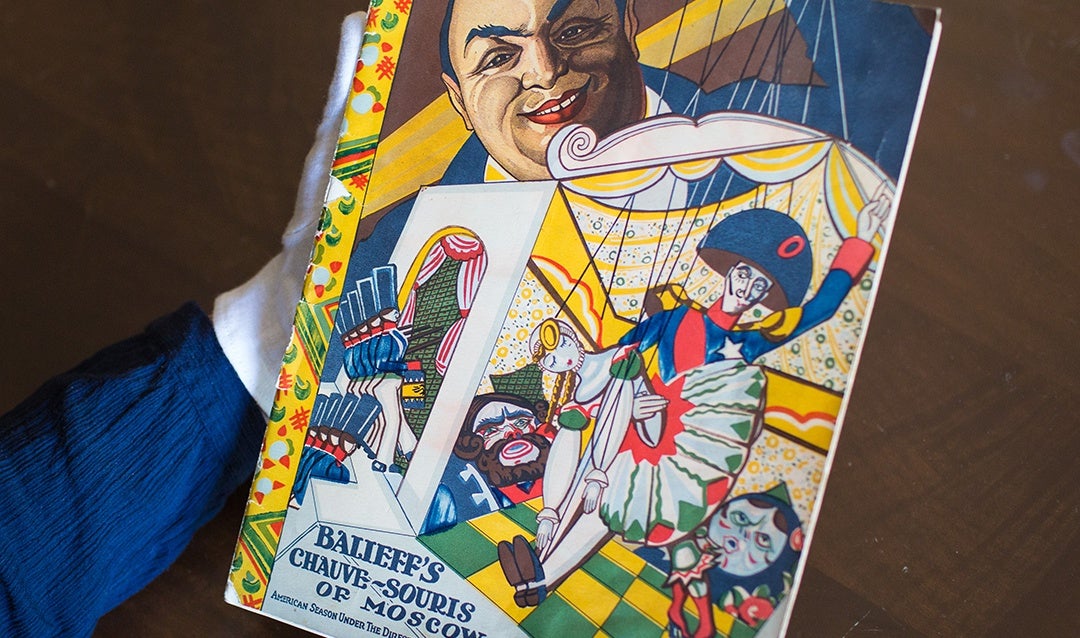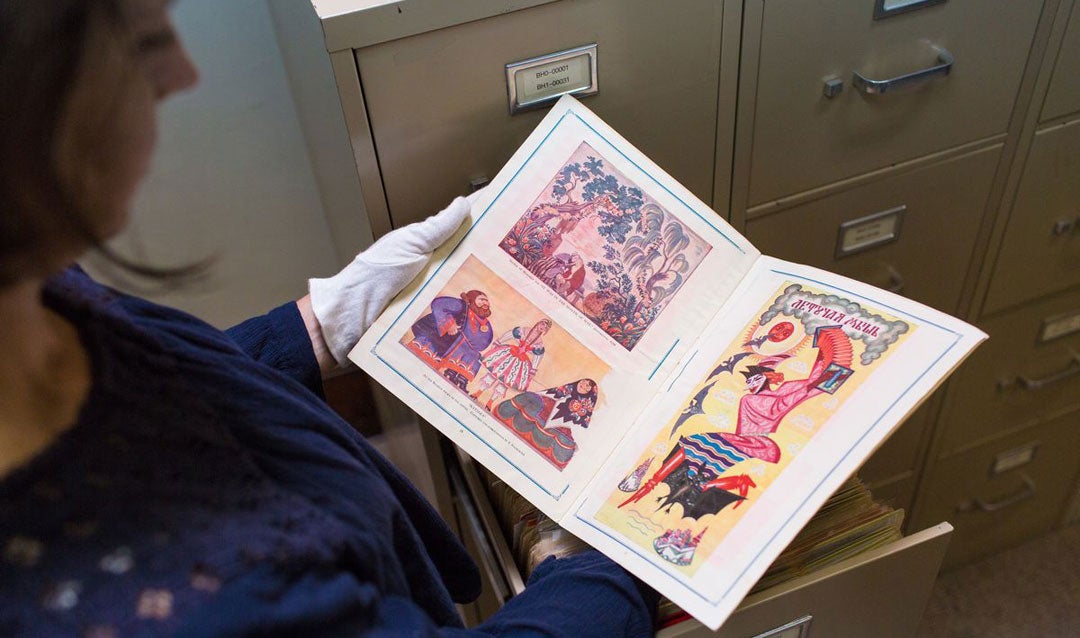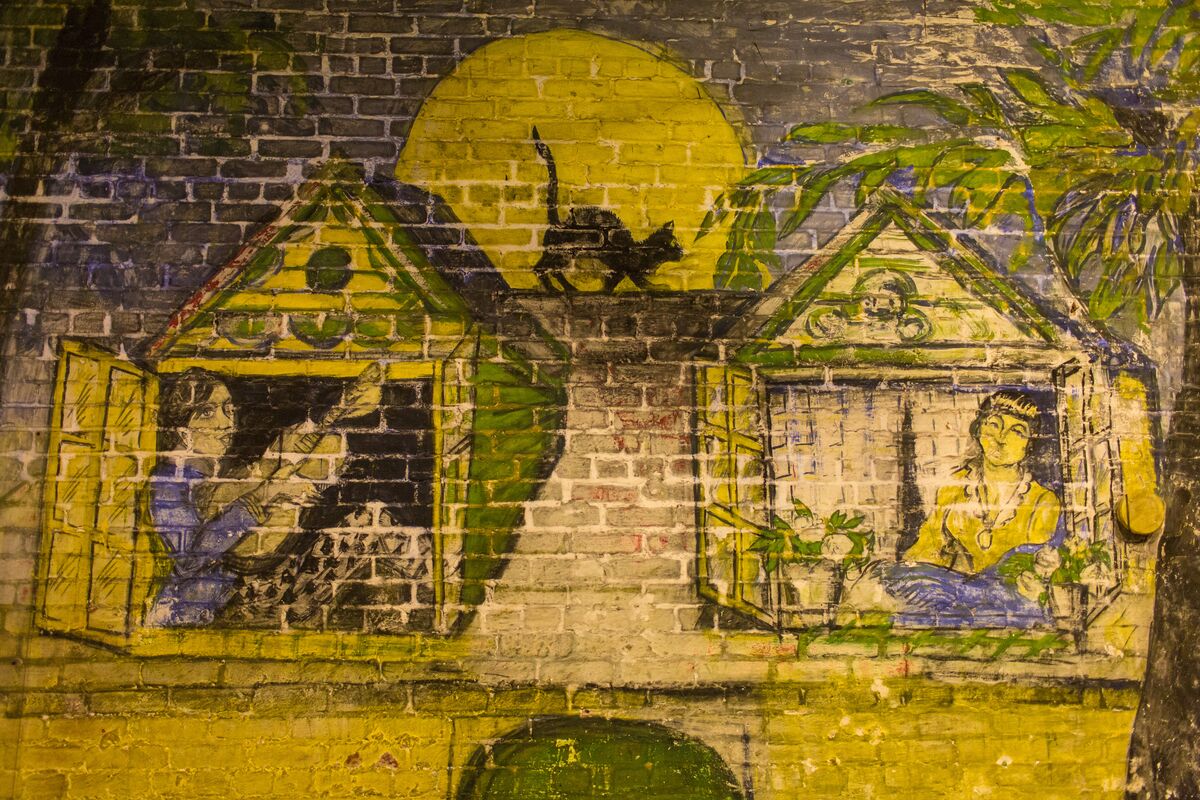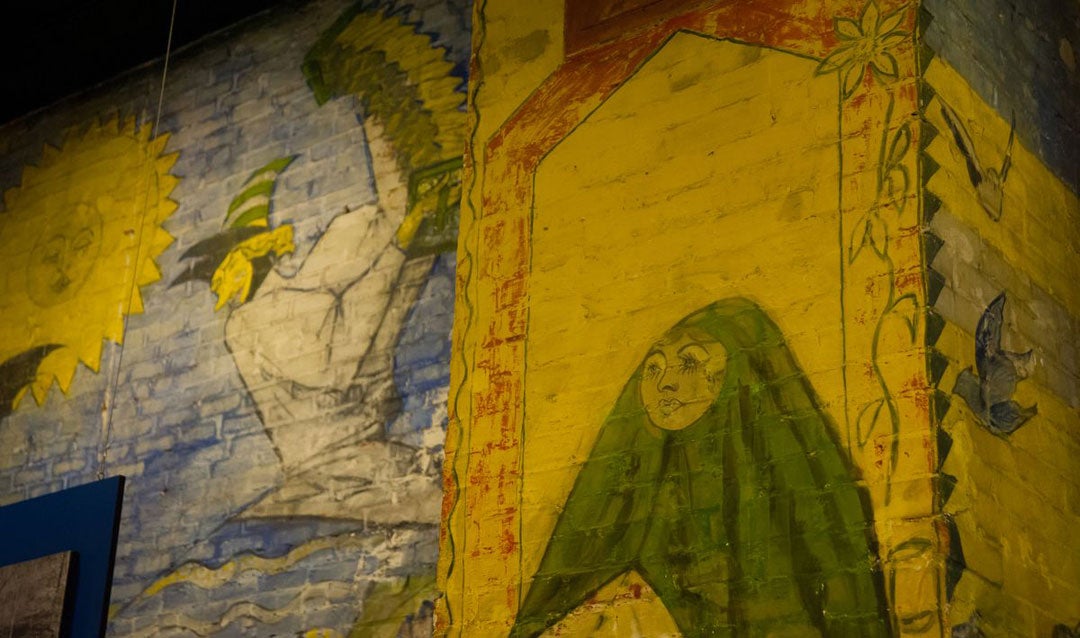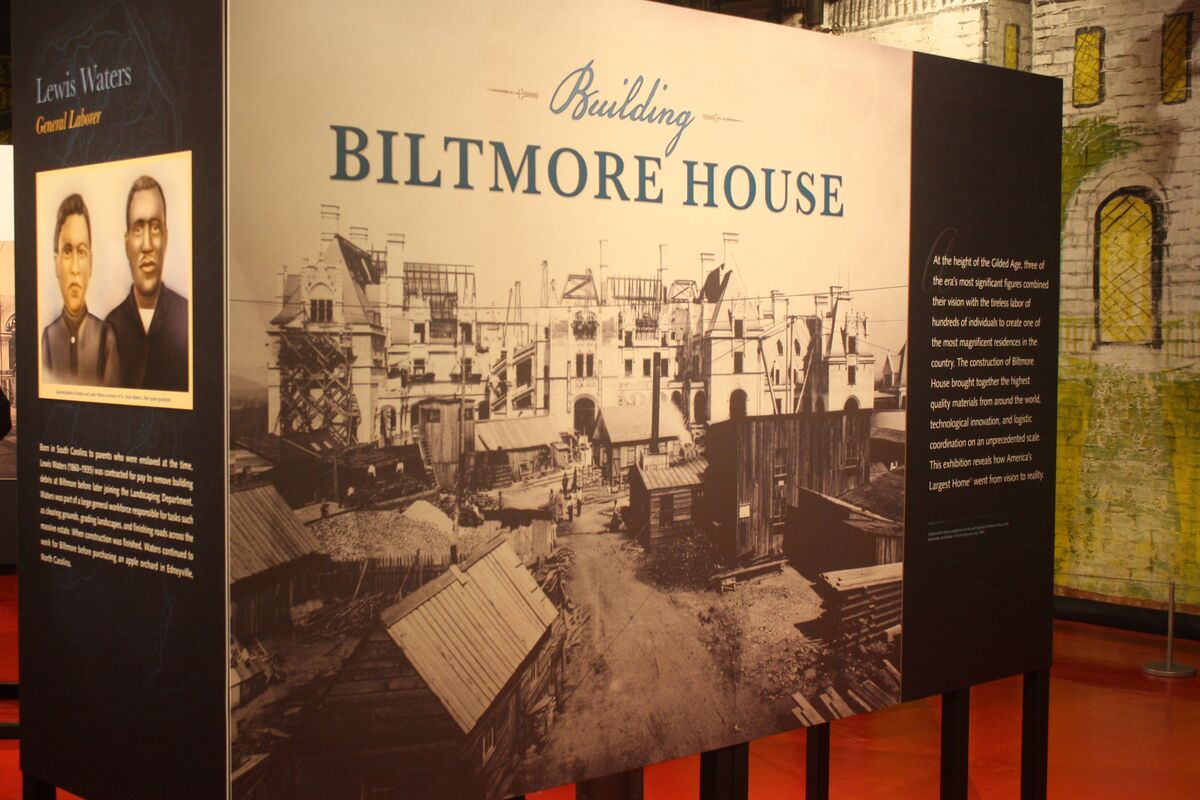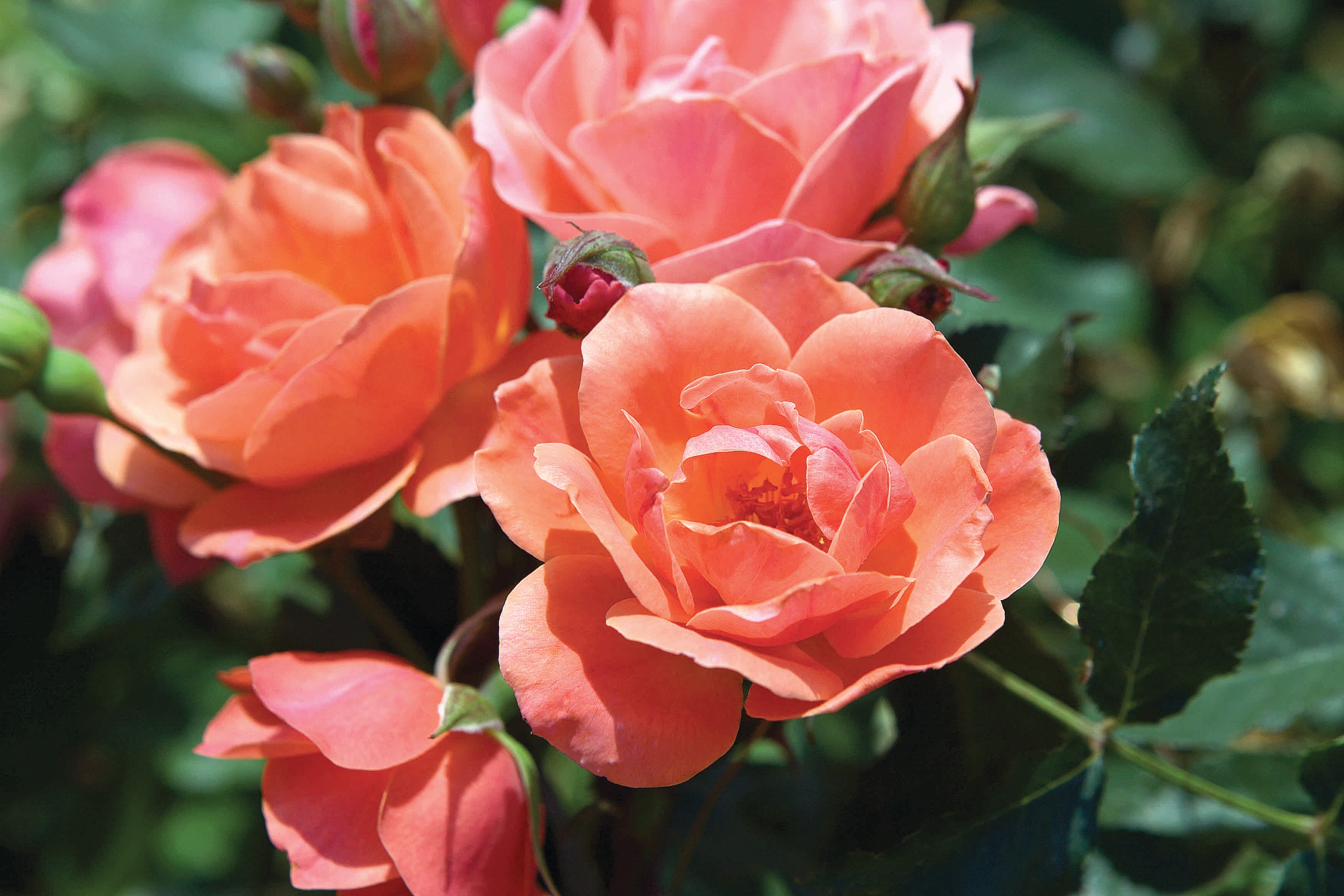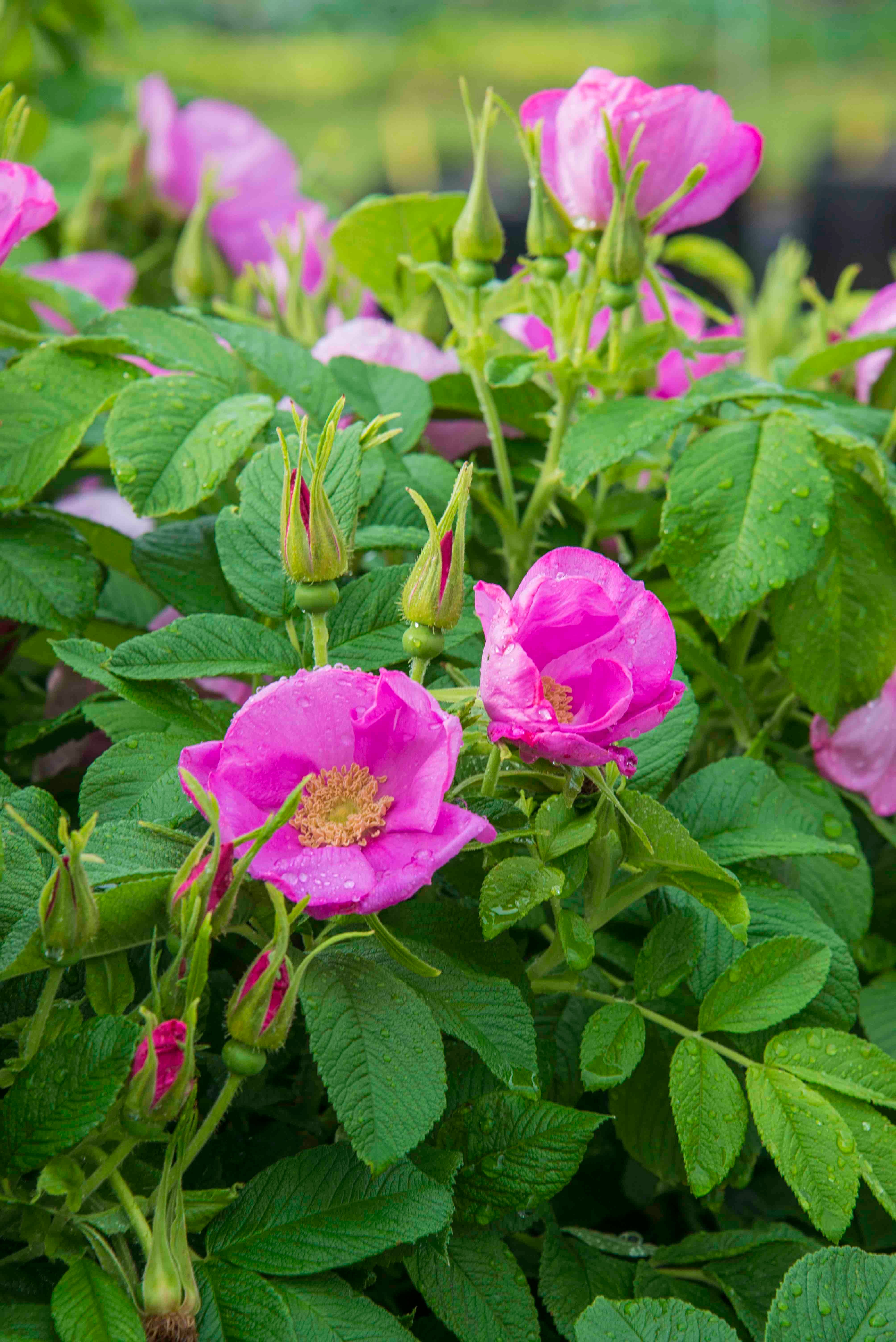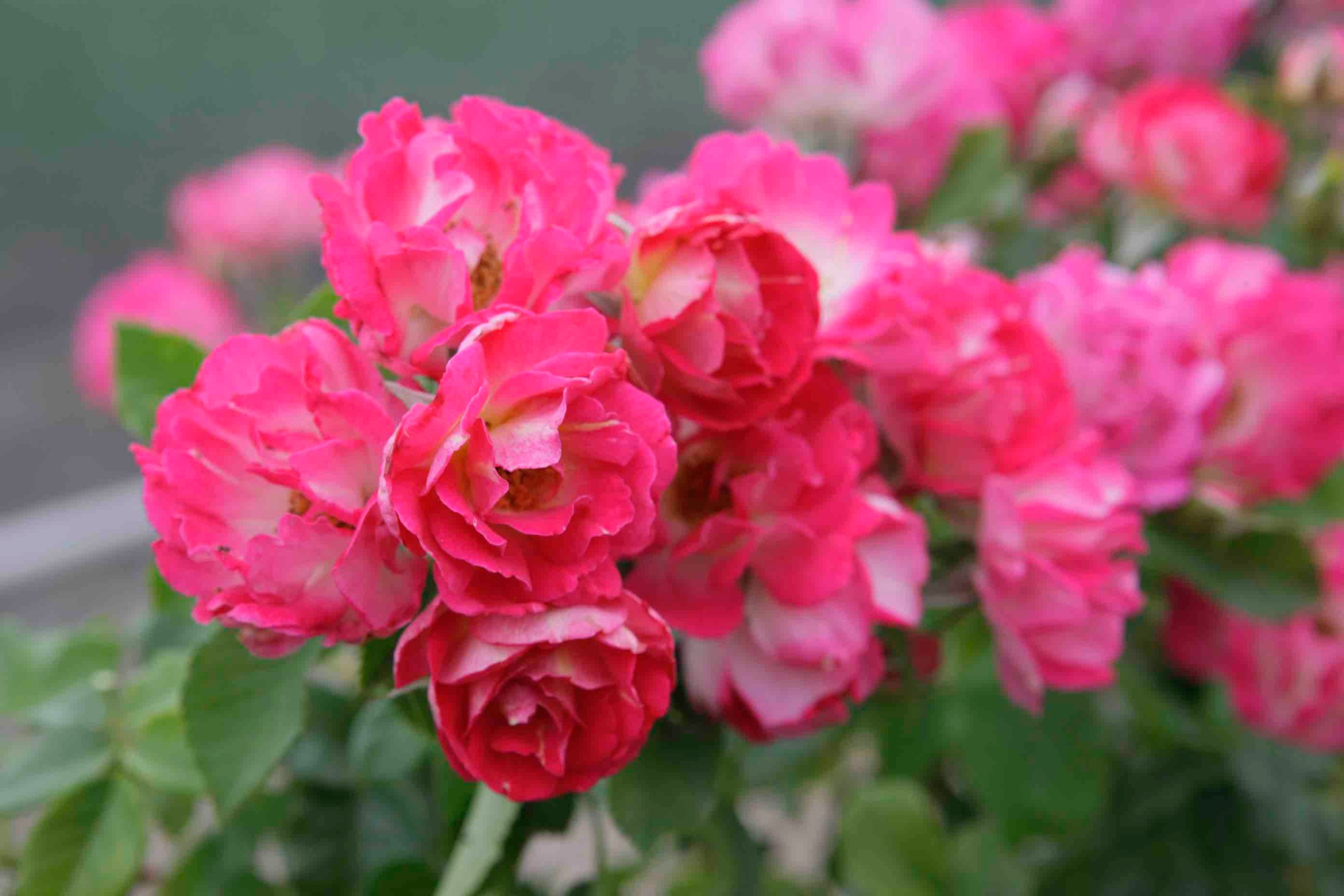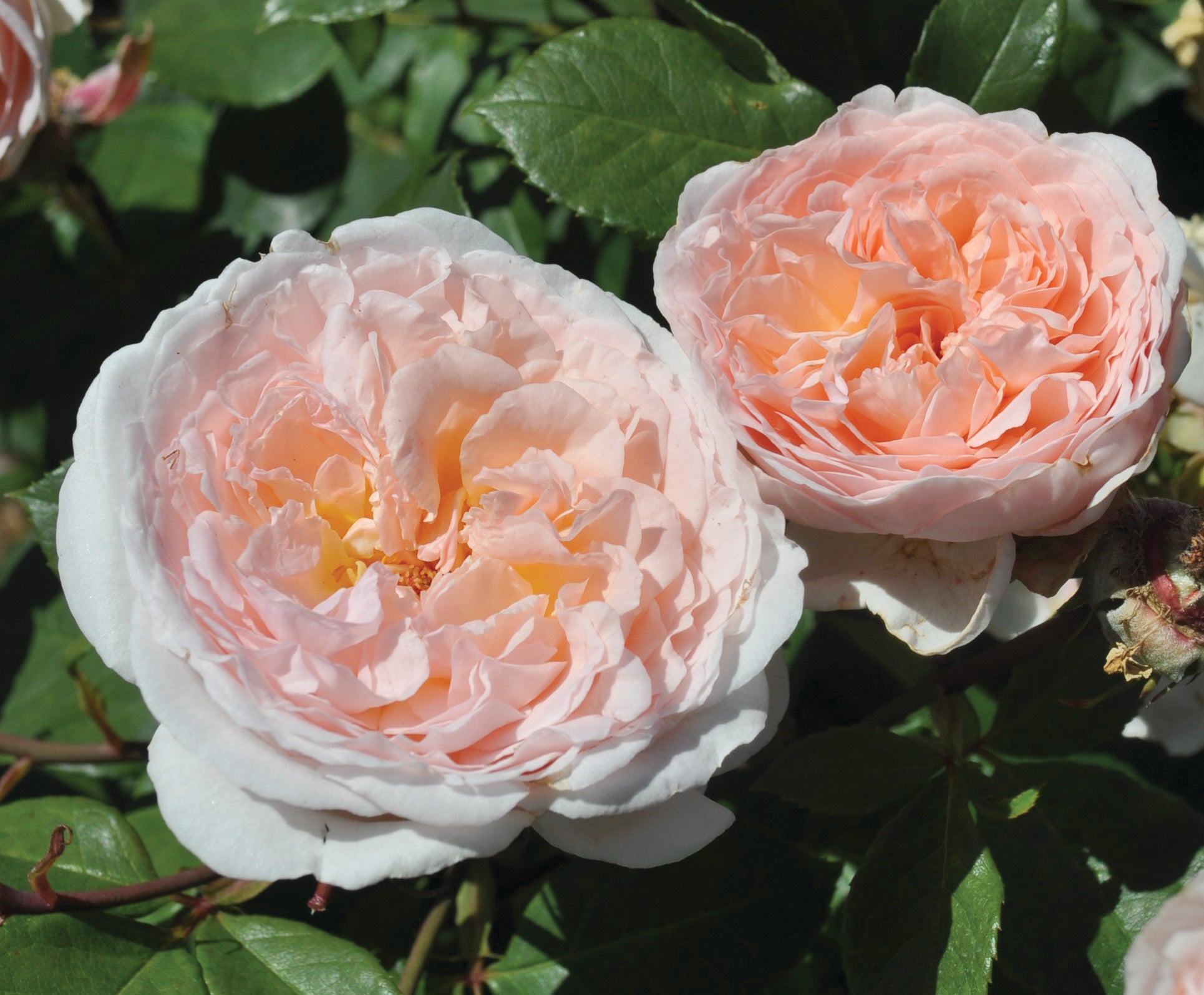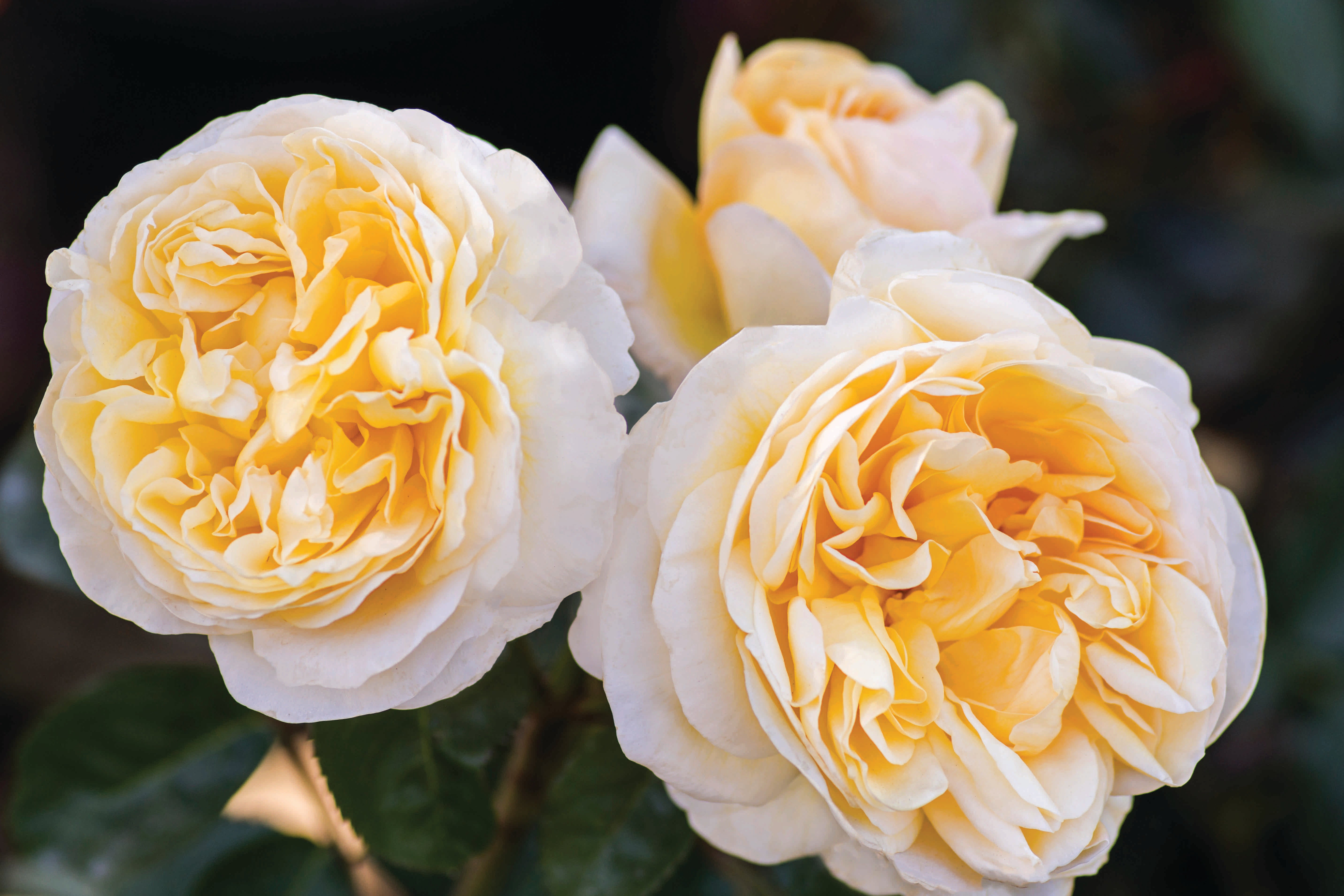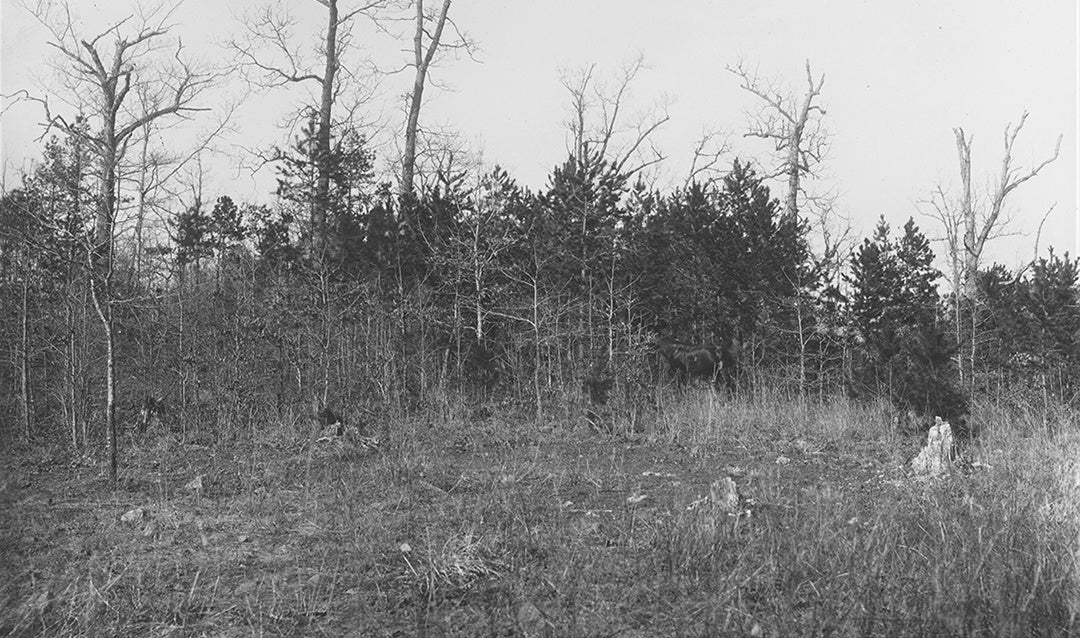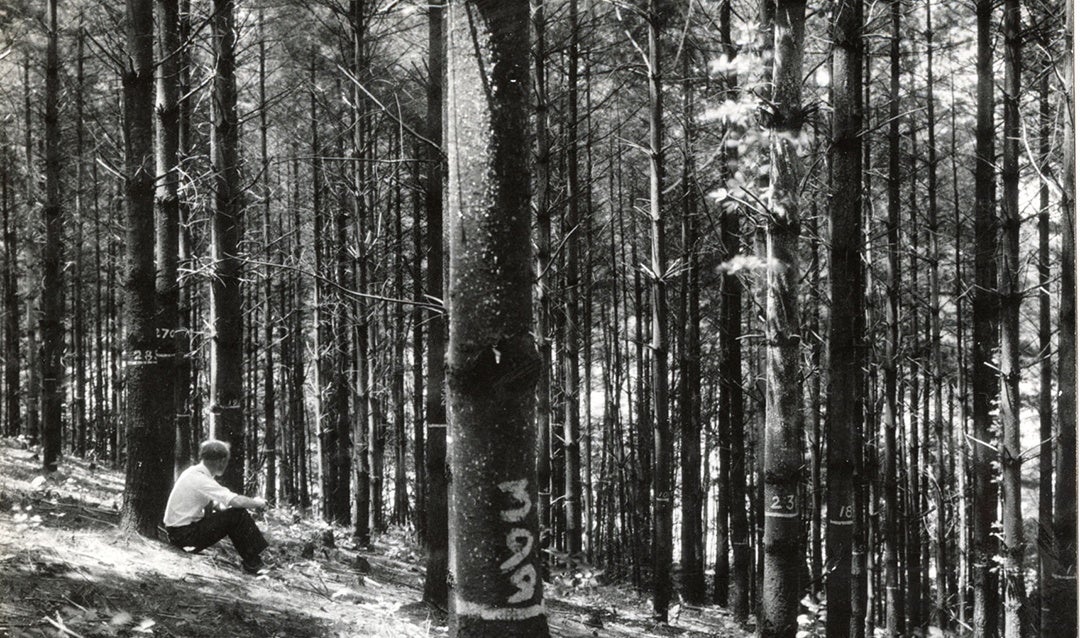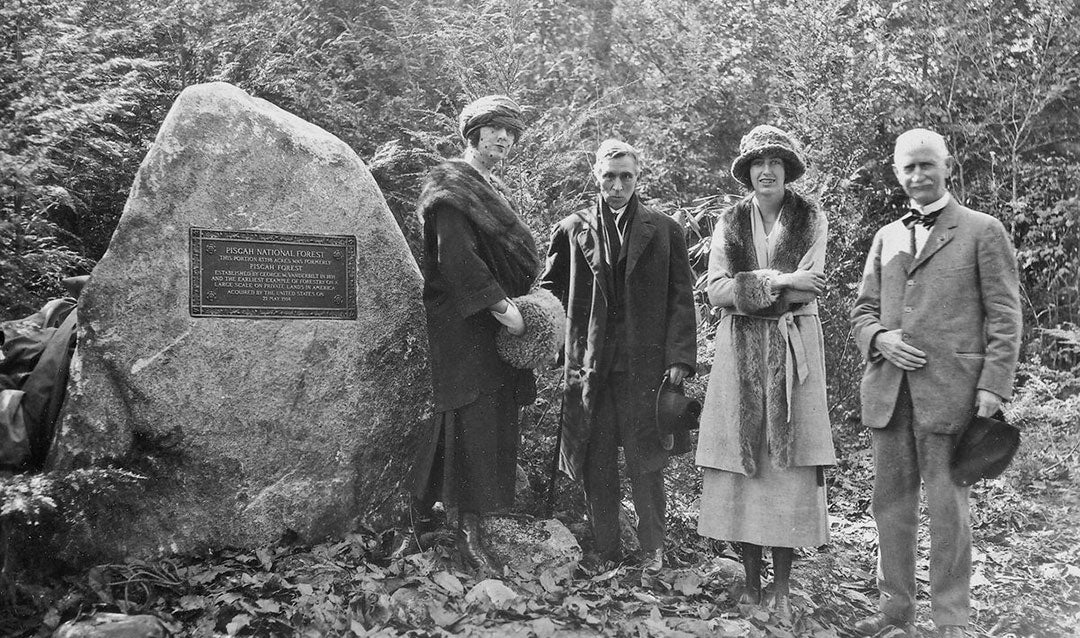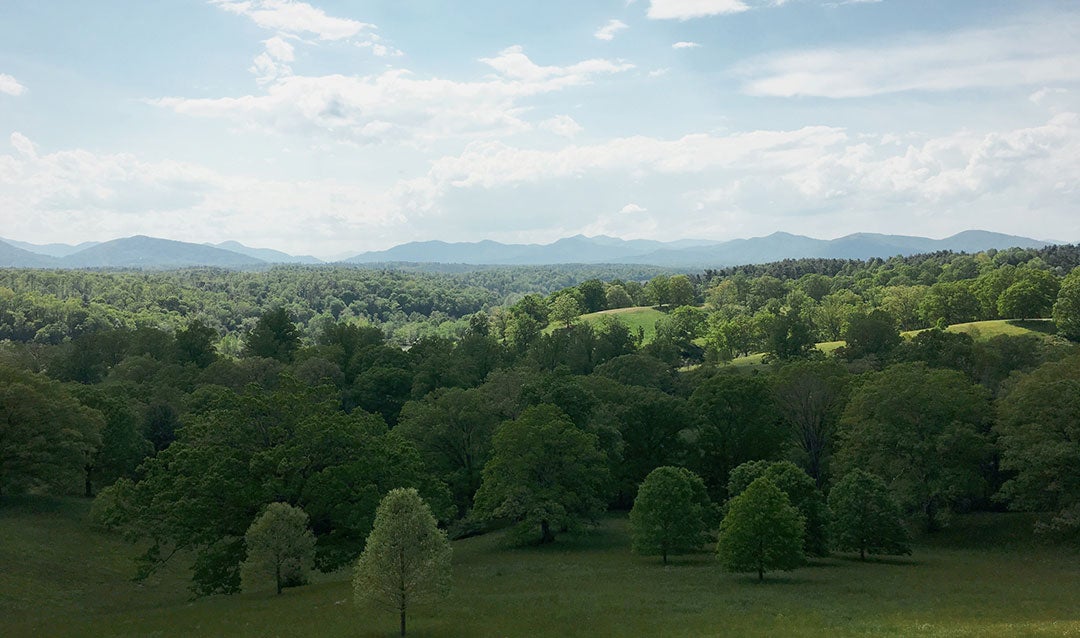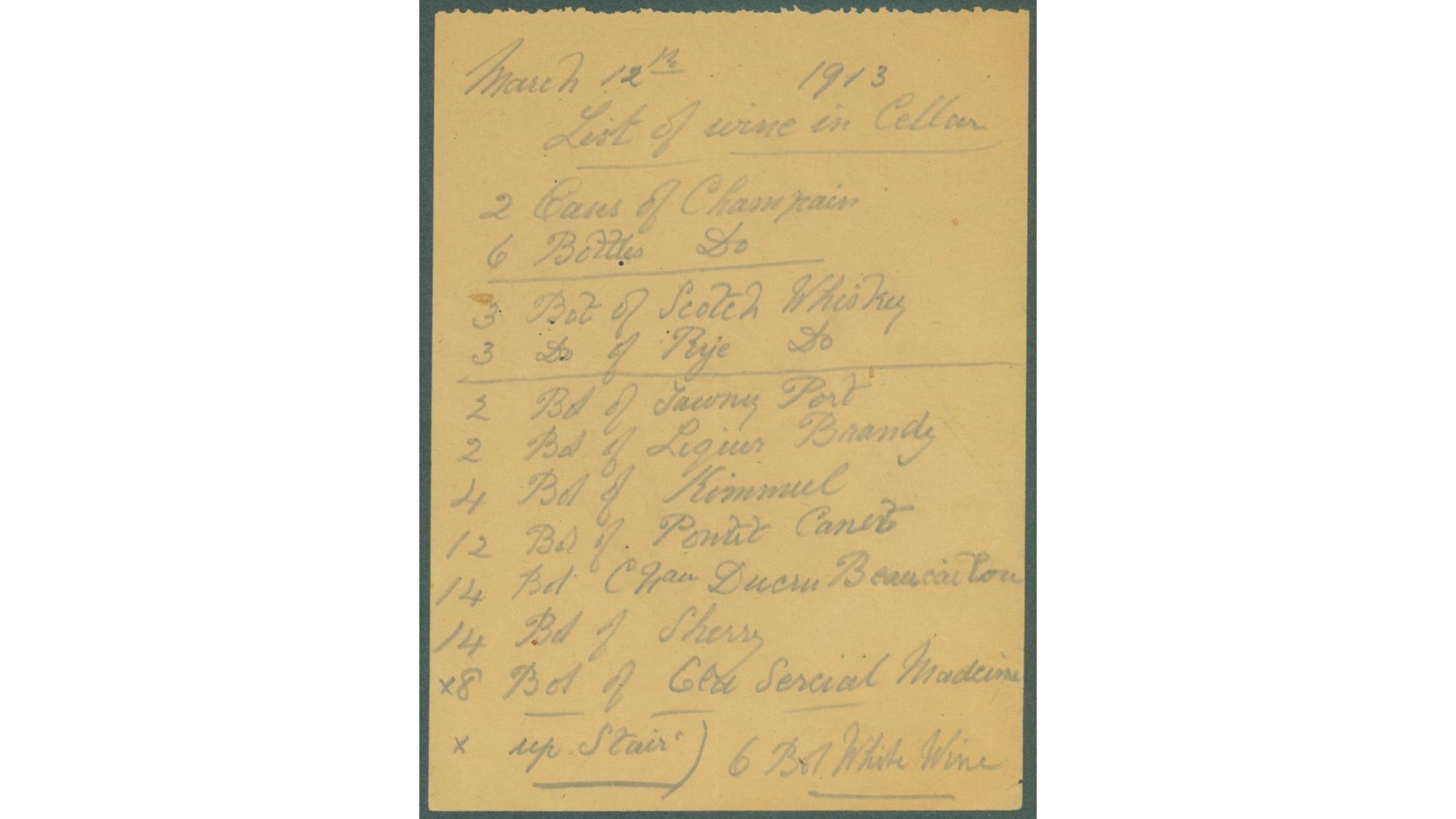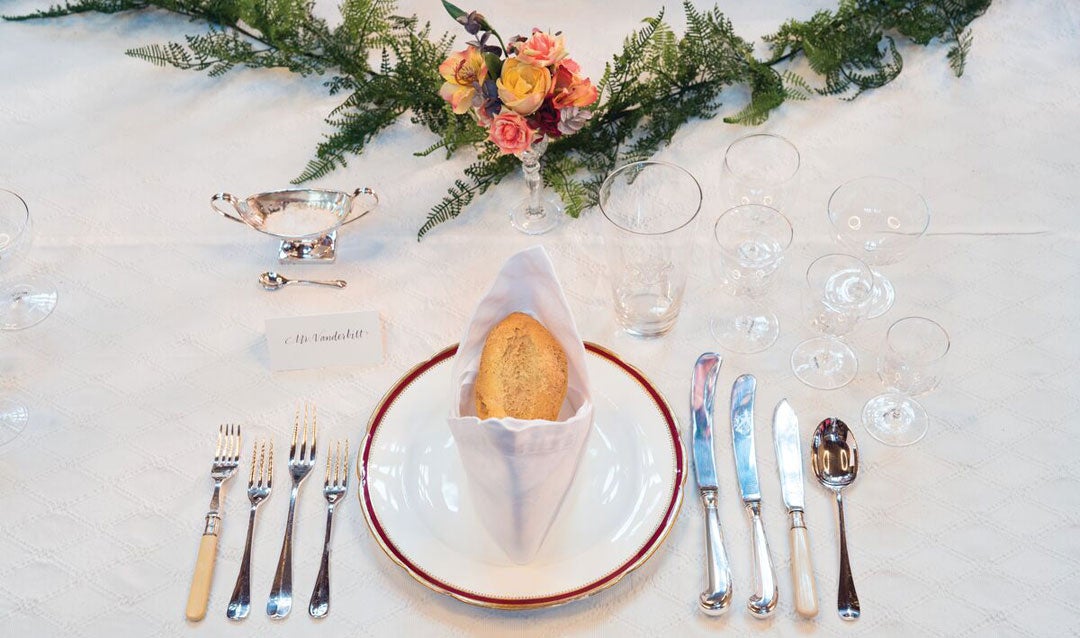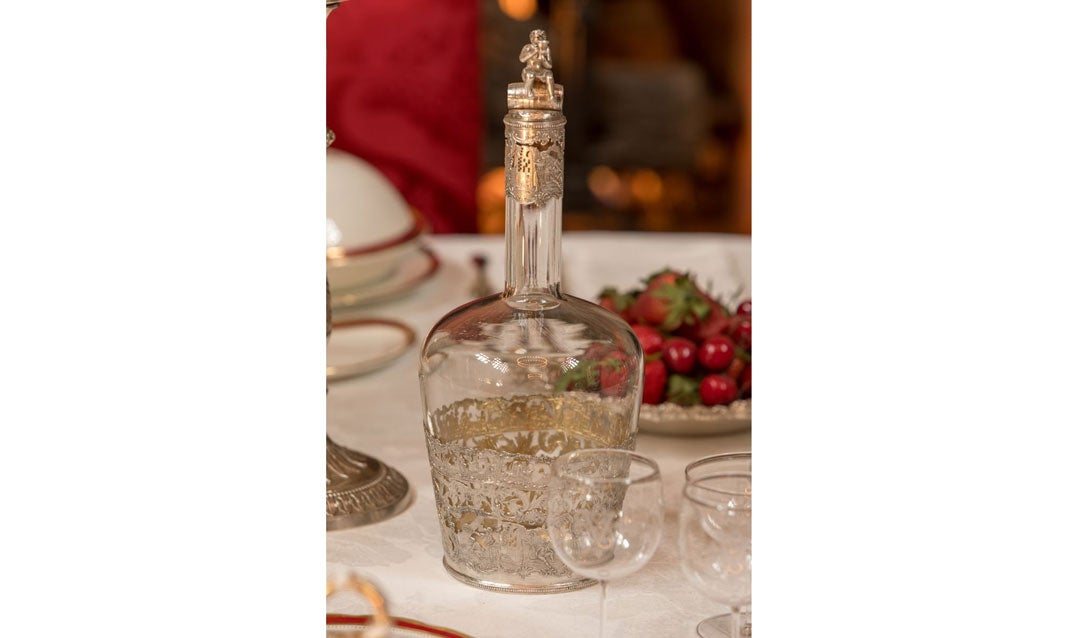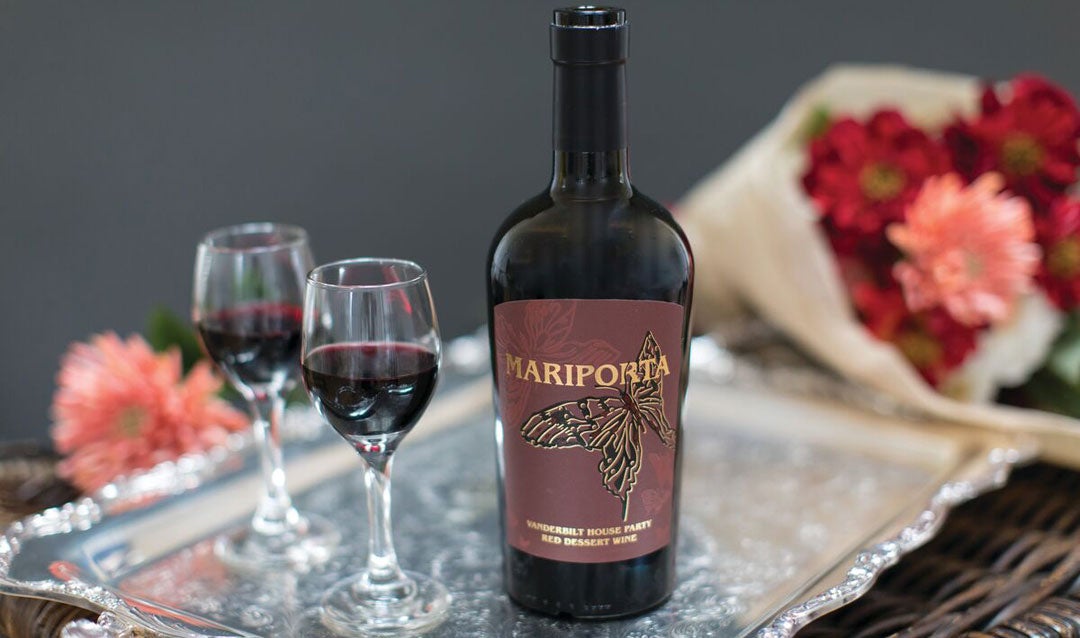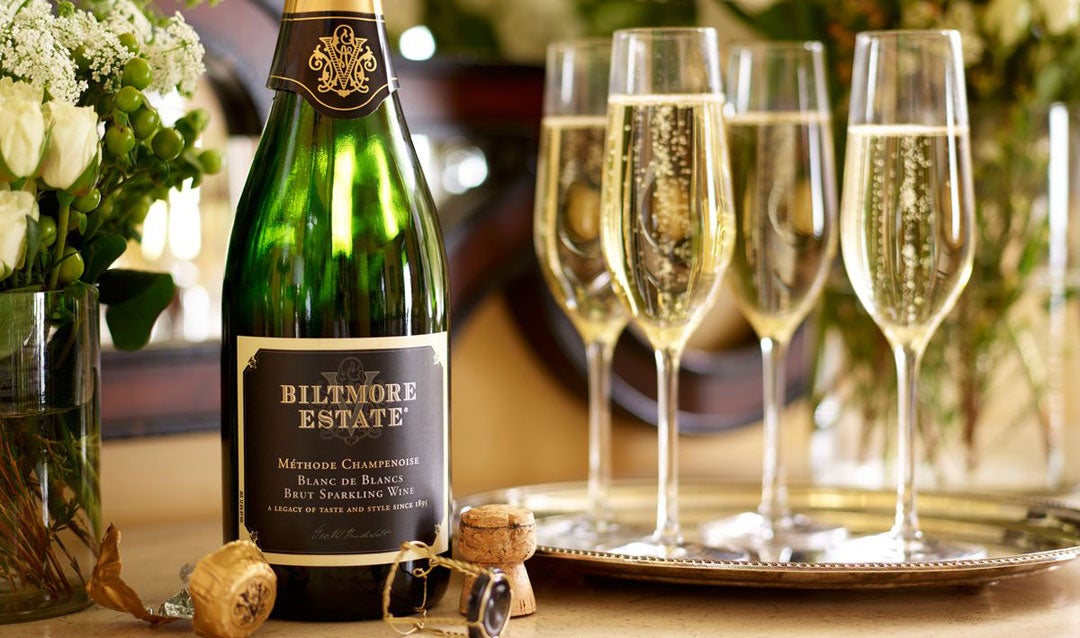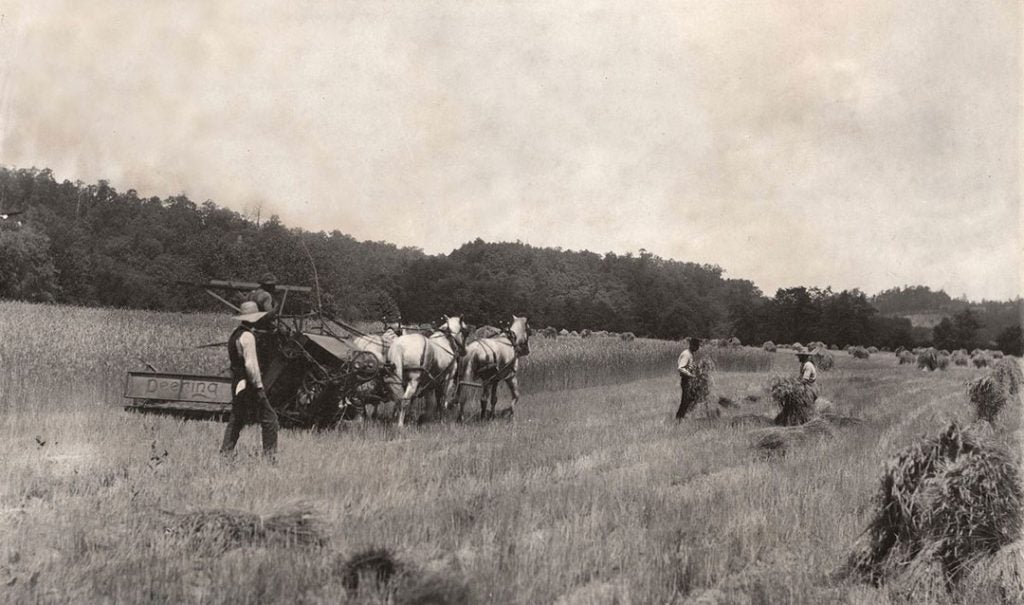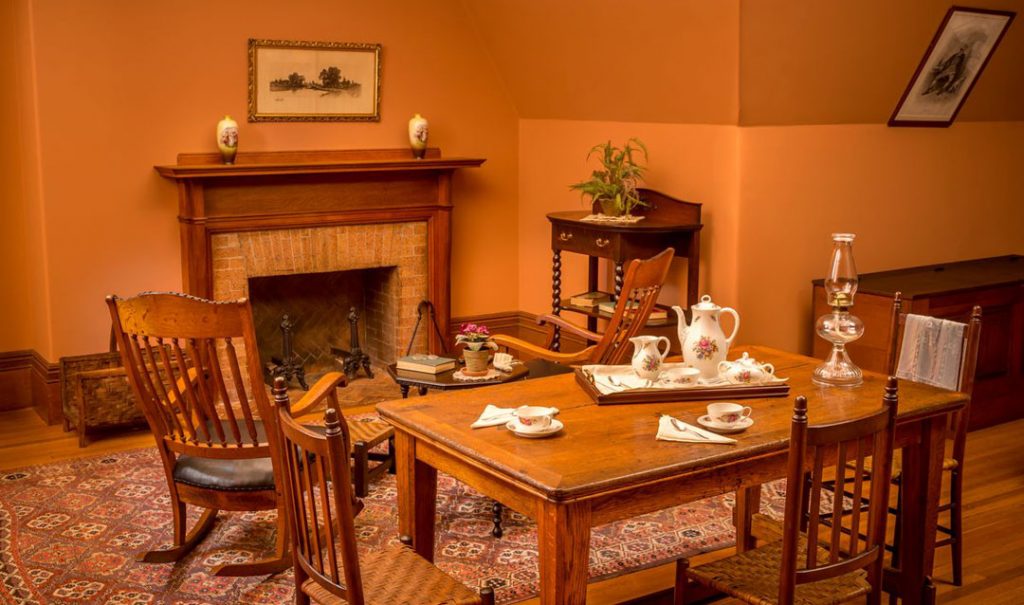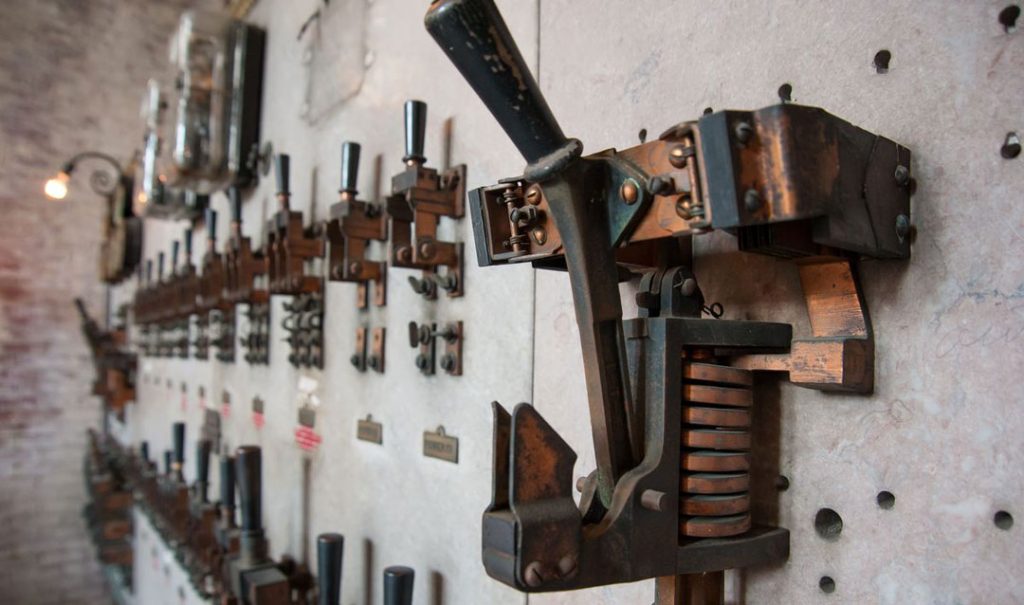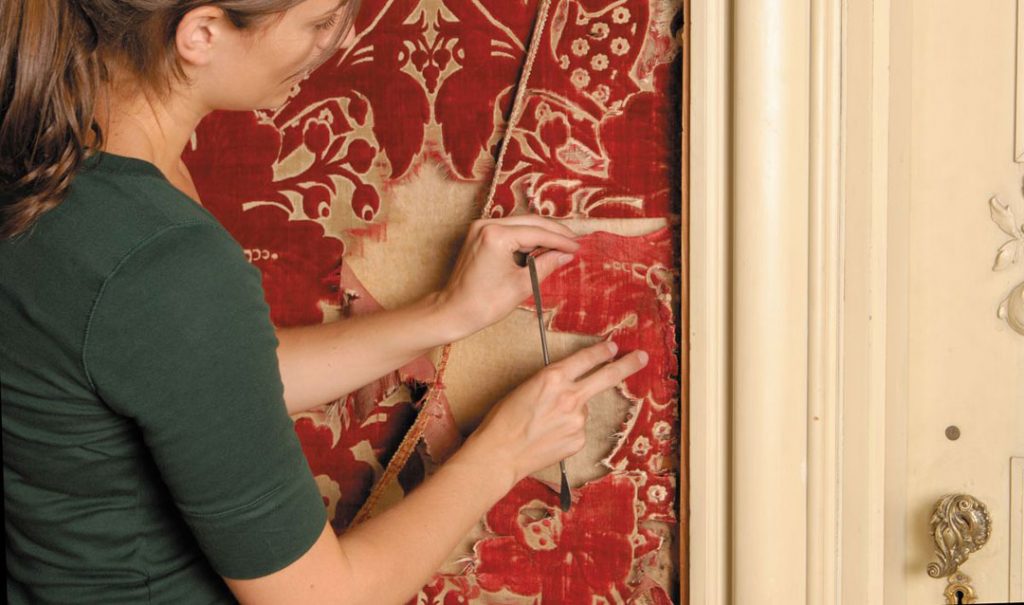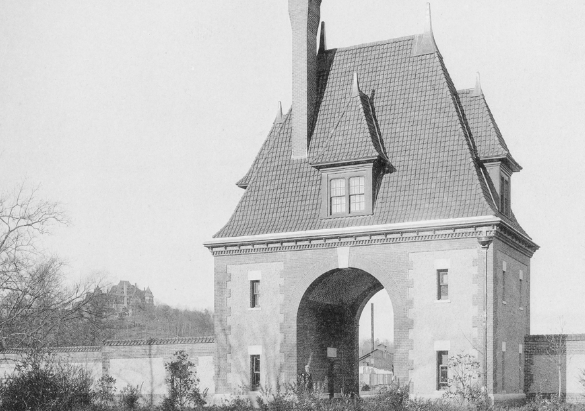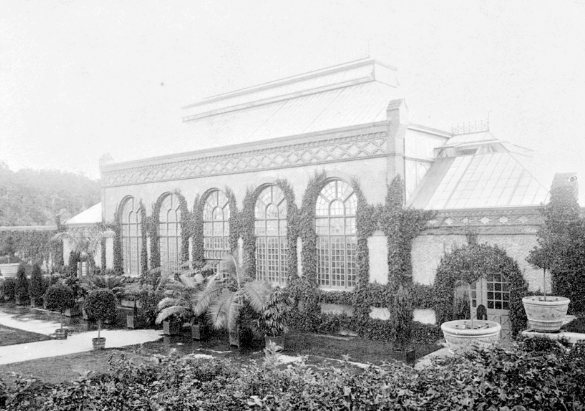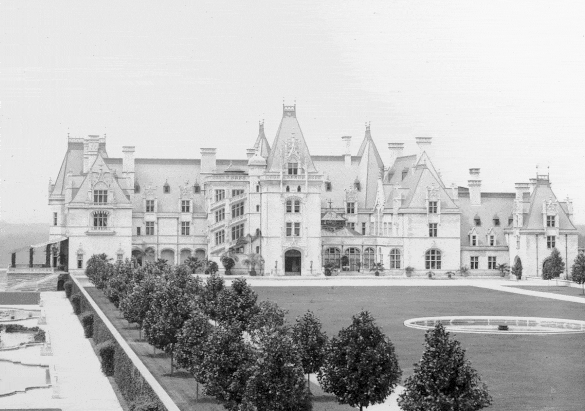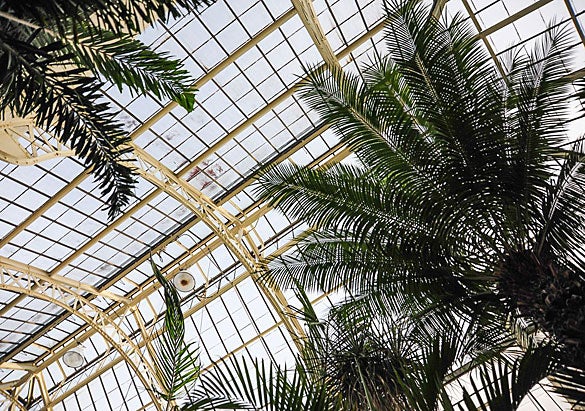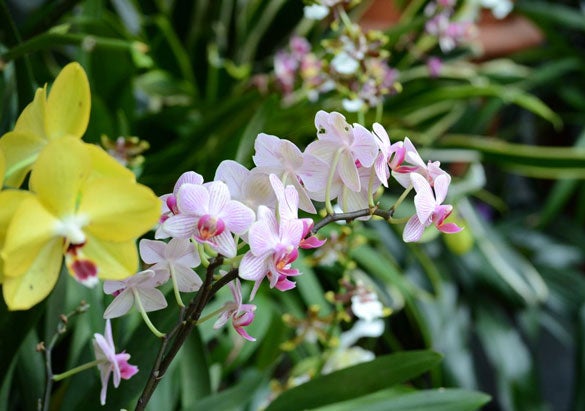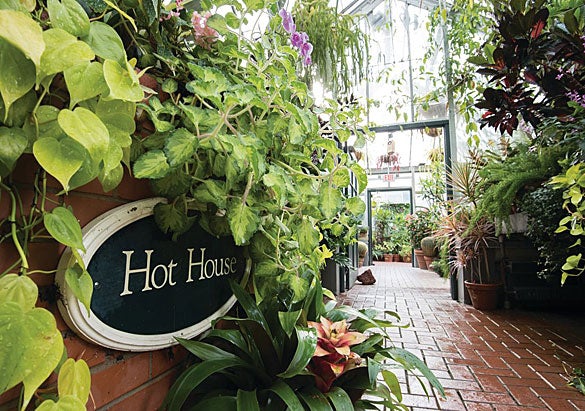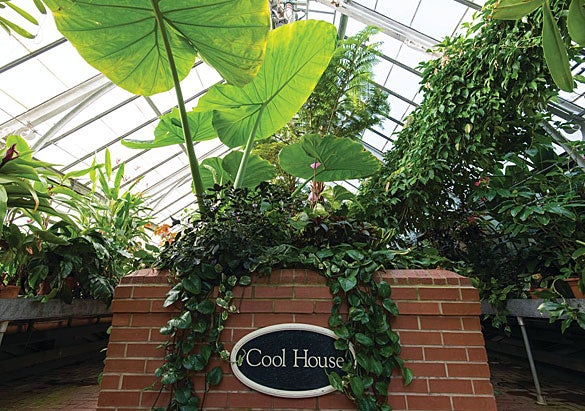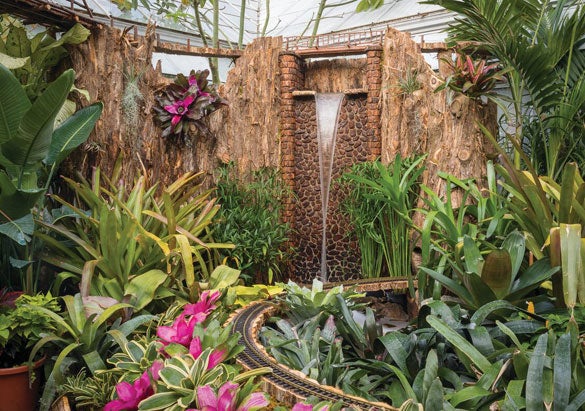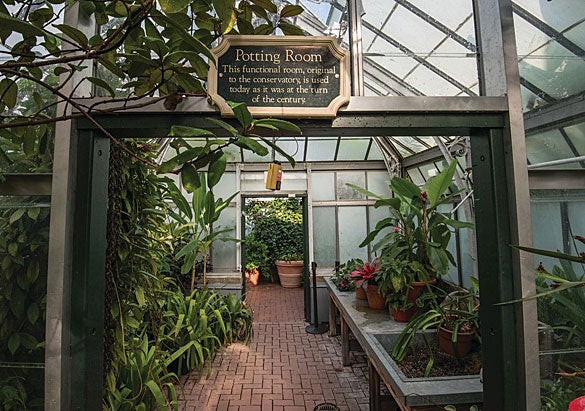Please enjoy this archived content from Christmas 2019.
Each year, our Floral Displays team decks the halls of America’s Largest Home® for Christmas at Biltmore.
For 2019, discover how they draw inspiration from the beautiful details, including the art and furnishings, in Biltmore House.
Winter Garden and Surroundings
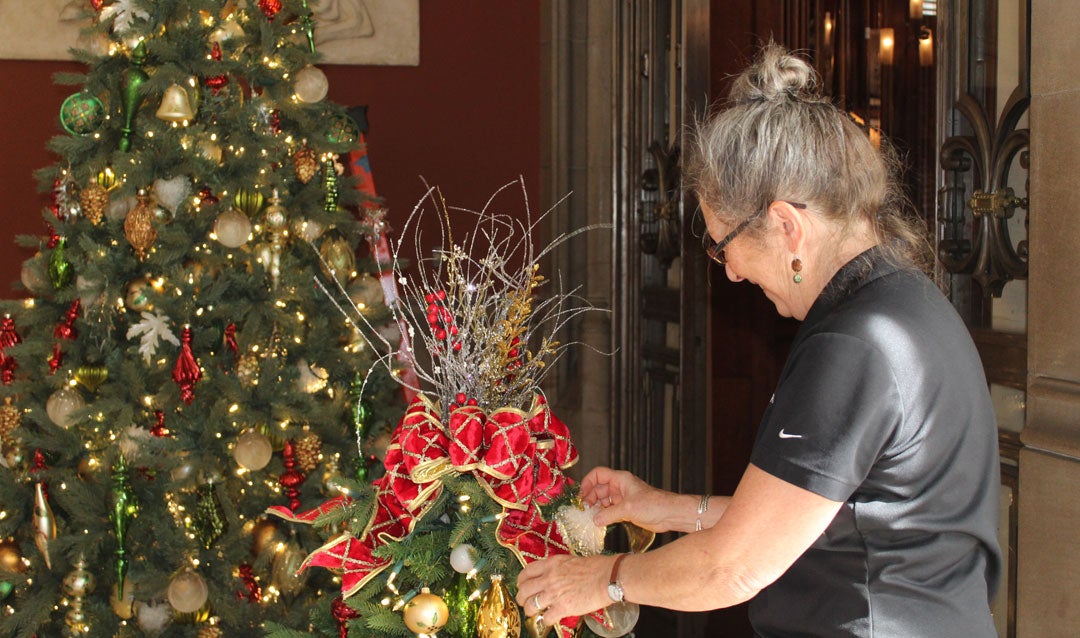
Norene Barrett puts finishing touches on a Christmas tree topper
Norene Barrett began working at Biltmore 18 years ago in the mail services department. Though she enjoyed her role, she looked for different ways to express her own creativity.
In 2015, after taking an intensive course in floral design, Norene joined Floral Displays and is now responsible for decorating sections of Biltmore House and the estate.
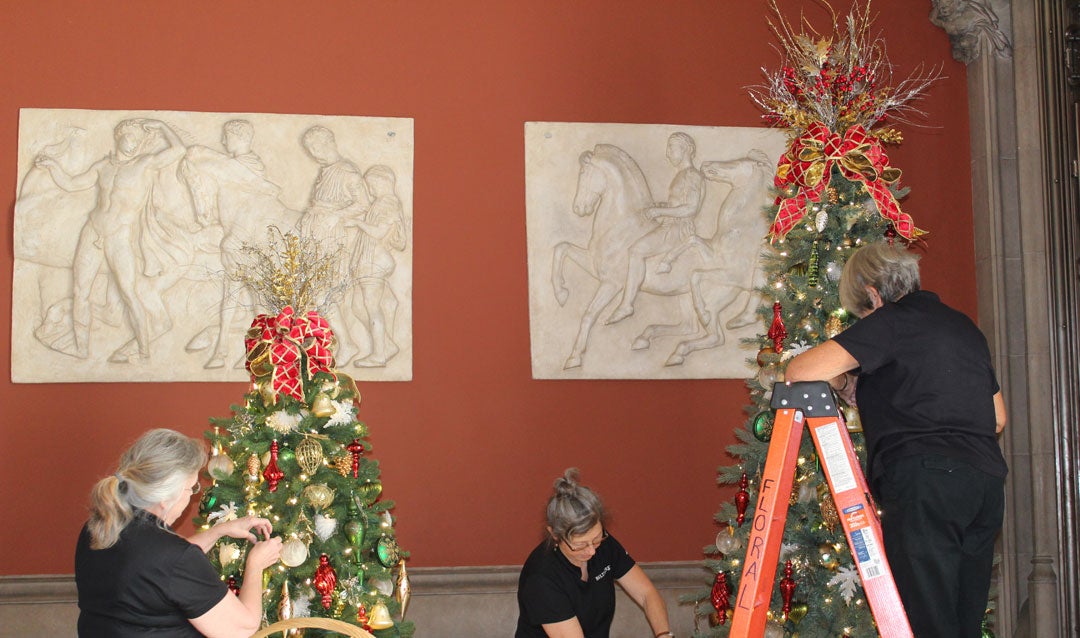
Floral team members Feny Bryan, Norene Barrett, and Kathy Nameth decorate a trio of trees inspired by the Greek friezes on the wall
“This trio of trees is meant to take guests back in time,” Norene said of her design for the area between the Winter Garden and the Billiard Room. “The trees are cheery and bright, but I used a lot of white elements for continuity with the series of Greek friezes on the walls.”
Norene added snowy branches to her décor along with period ornaments to bring a nostalgic feeling of Christmas past.
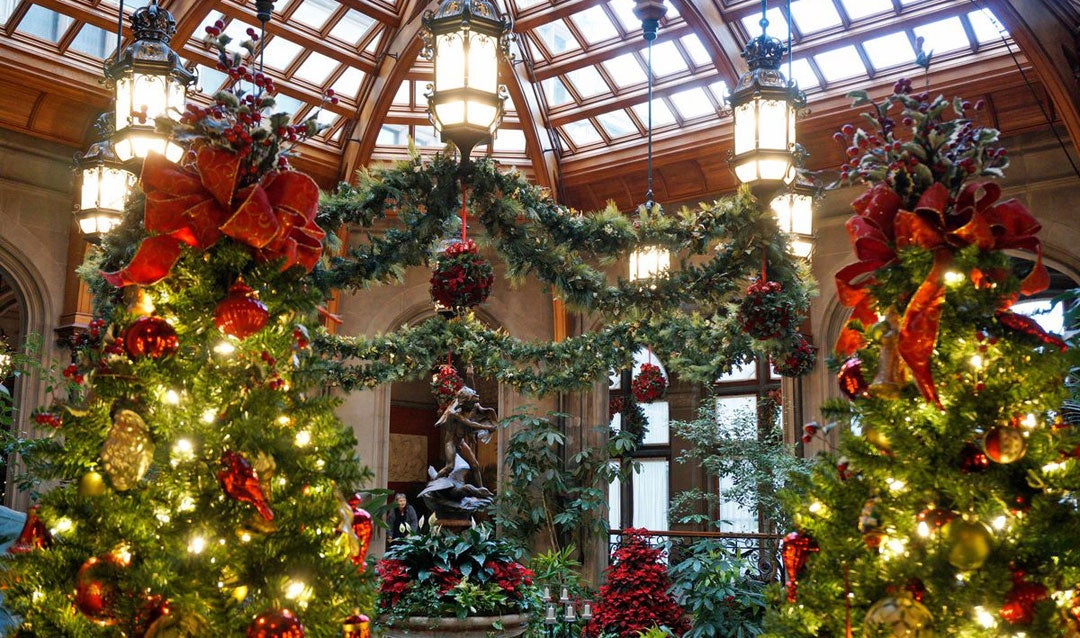
Winter Garden decorated for Christmas at Biltmore
For the Winter Garden, Norene is planning to light the evergreen garlands so that they glow, and instead of traditional kissing balls suspended from the greenery, she has created sparkling swags that catch the light. She’ll also add plenty of poinsettias to emphasize the garden feel of the space.
Breakfast Room
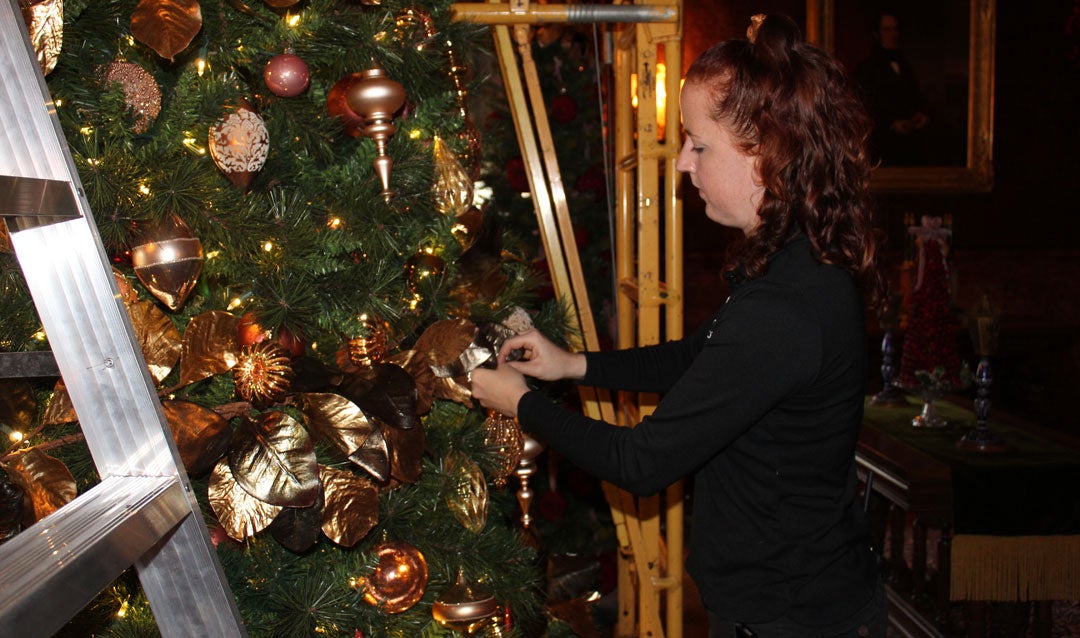
Joslyn Kelly adds ornaments to the Breakfast Room tree
“This
is the room where the family would eat breakfast, so I wanted it to have a
warm, homey feeling as if you’re being welcomed to the table,” said Joslyn
Kelly, floral designer.
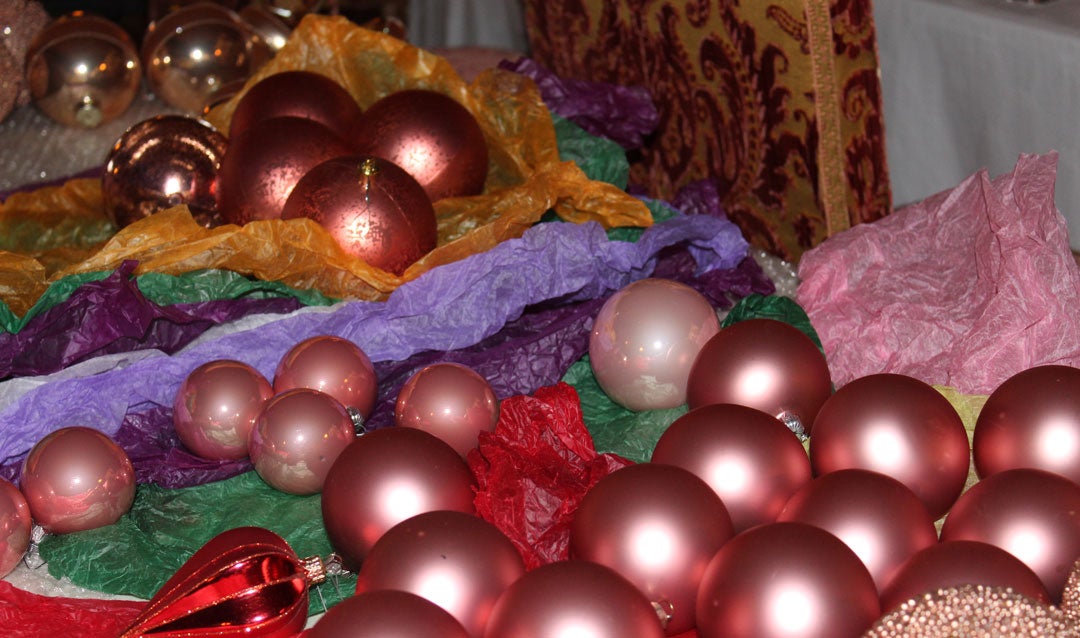
A selection of red and pink Christmas ornaments chosen to complement the Breakfast Room decor
Drawing inspiration from the room’s elegant cut velvet draperies and upholstery, Joslyn decked the halls with ornaments in a range of pinks and reds to complement the lovely patterns and colors of the fabric.
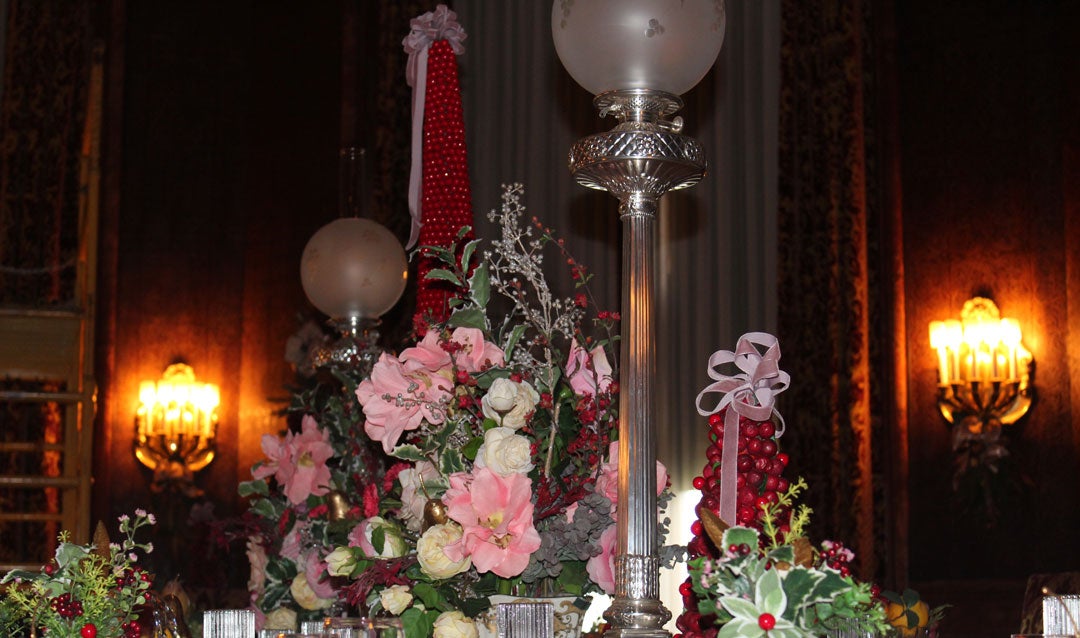
Lush floral displays and cranberry topiaries top the Breakfast Room table during Christmas at Biltmore
Look for glorious floral arrangements, towering topiaries of deep burgundy cranberries, and gilded pears among the delicate crystal and china place settings on the table.
Morning Salon
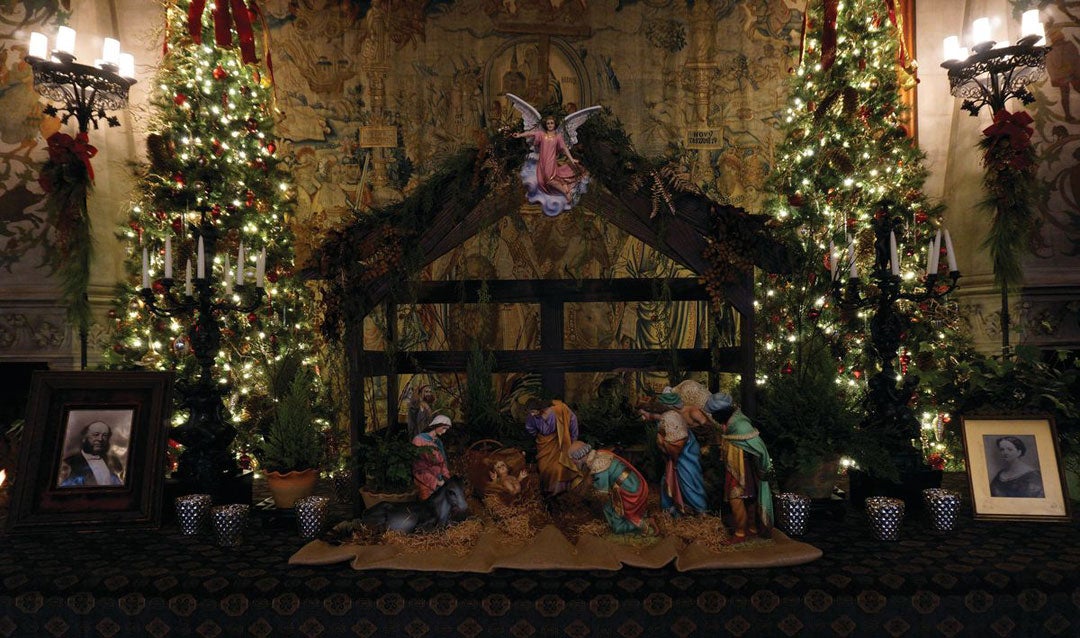
The estate’s Nativity scene, often staged in the Tapestry Gallery in years past
Cristy Leonard has been a member of the floral team for seven years, and the Salon is one of her areas to decorate for our 2019 Christmas at Biltmore celebration.
The estate’s large traditional Nativity will be staged in the Salon this year, and according to Cristy, the set has been a major source of inspiration for her designs.
“I’ve planned special new surroundings that includes twinkling lights to resemble nighttime in Bethlehem,” Cristy said.
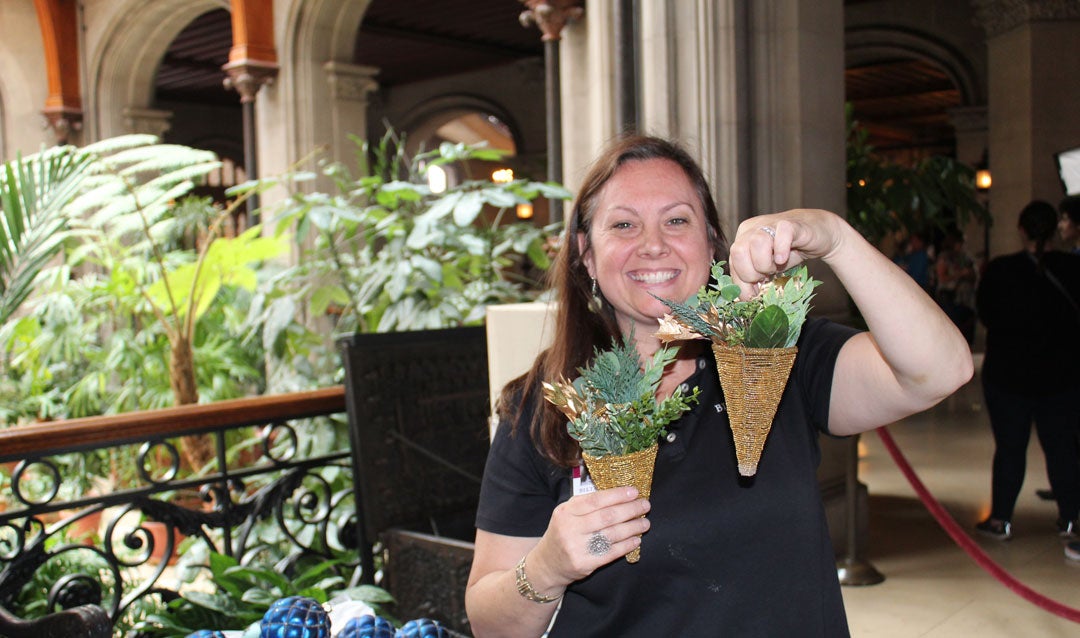
Cristy Leonard displays ornaments she created for the Salon tree
Cristy chose to deck the halls of the Salon’s main tree in brilliant peacock blues and greens with bright touches of gold. She added cherubs, gilded grapes, and grapevines to symbolize the prosperity and blessings of the season.
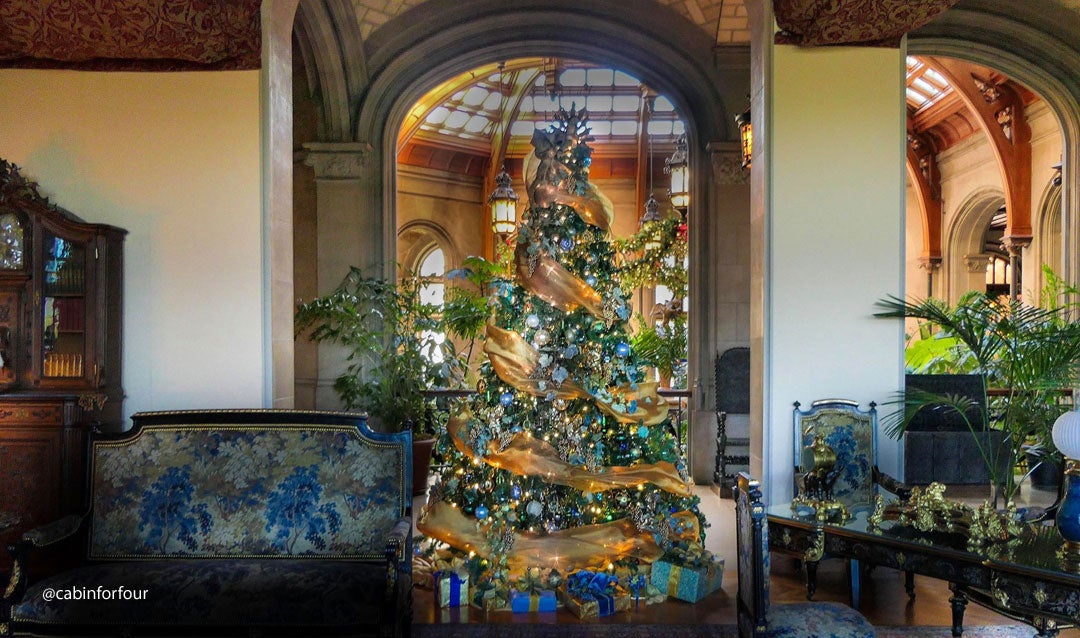
Salon Christmas tree wound with gold fabric
As a finishing touch, Cristy swathed the tree in yards of gauzy golden fabric, echoing the look of the room’s iconic draped and tented ceiling.
Third Floor Living
Hall
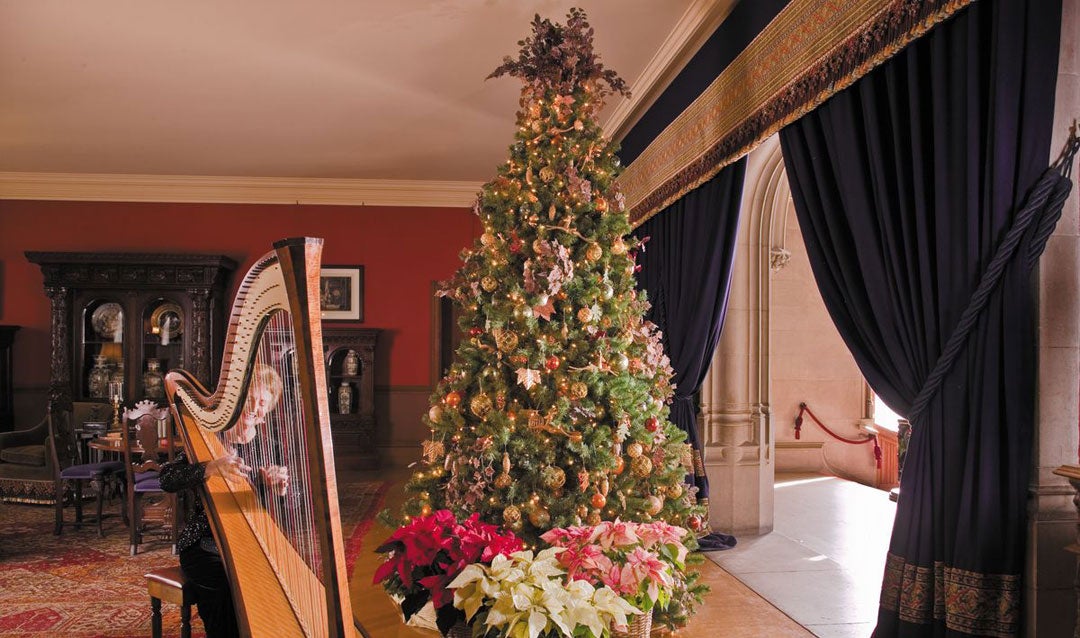
A harpist plays Christmas carols in the Third Floor Living Hall
During the Vanderbilt era, Third Floor Living Hall was a place for guests to relax in the evenings, share the events of the day, and perhaps read or catch up with friends.
Michelle Warren of Biltmore’s floral team created a child’s tree for this room, complete with dolls, toys, and wooden soldiers around the base, ready for the younger set to play with them while their parents indulged in a sing-along or a game of cards.
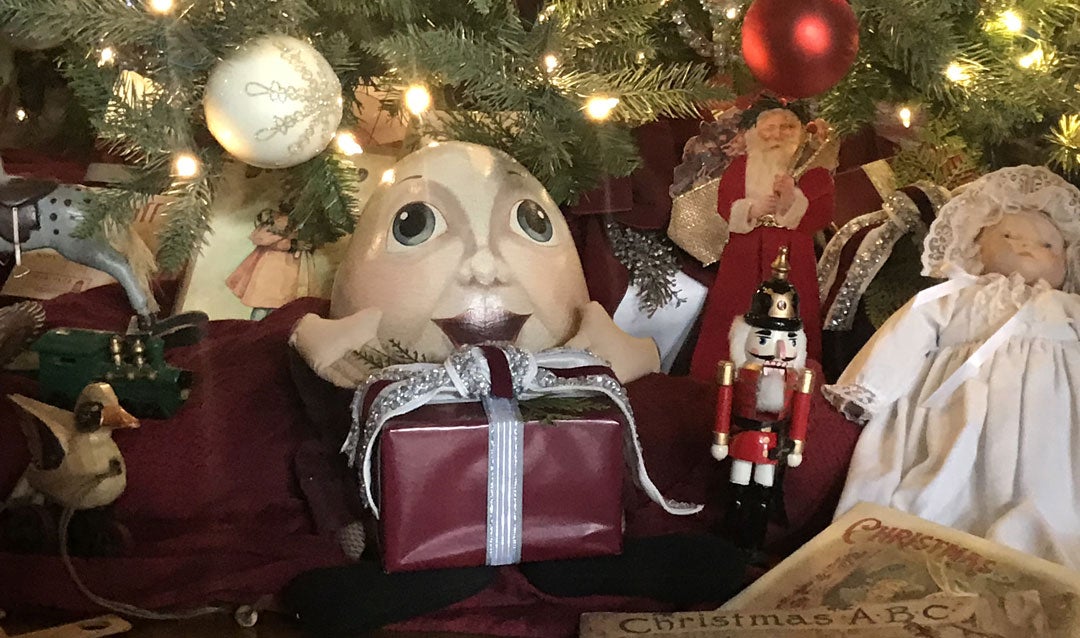
A whimsical Humpty Dumpty and other toys under the Third Floor Living Hall Christmas tree
As you enter Third Floor Living Hall, look for a charming scene featuring a table set up with paper, ribbon, and tags, just as if Edith Vanderbilt were wrapping her gifts for the Christmas season!
Other 2019 Christmas at Biltmore highlights:
- Grand Staircase
- This elegant Christmas tree is centered under the Grand Staircase Chandelier, making it appear as though the four-story light is the tree topper.
- Banquet Hall
- From the 35-foot fresh Fraser fir at one end to the triple fireplaces at the other, the Banquet Hall is a traditional guest favorite and one of the most beloved rooms in Biltmore House.
- Library
- Themed around the idea of Christmas Traditions, the Library incorporates traditional colors such as gold, red, green, plaids, and a tartan print.
- Oak Sitting Room
- The colorful décor in rich jewel tones of red, cobalt, gold, and green is drawn from the room’s splendid Axminster—the only rug of English origin in Biltmore House.
- Mrs. Vanderbilt’s Bedroom
- The tree ornaments are inspired by the Vanderbilts’ courtship which took place in Paris. The room features a soft mix of lilac, amber, and cream colors drawn from the distinctive oval ceiling.
- Main Kitchen
- Look for a whimsical gingerbread replica of Biltmore House.
Christmas at Biltmore
Enjoy the daytime celebration November 1, 2019–January 5, 2020, and experience Candlelight Christmas Evenings through January 4, 2020.
